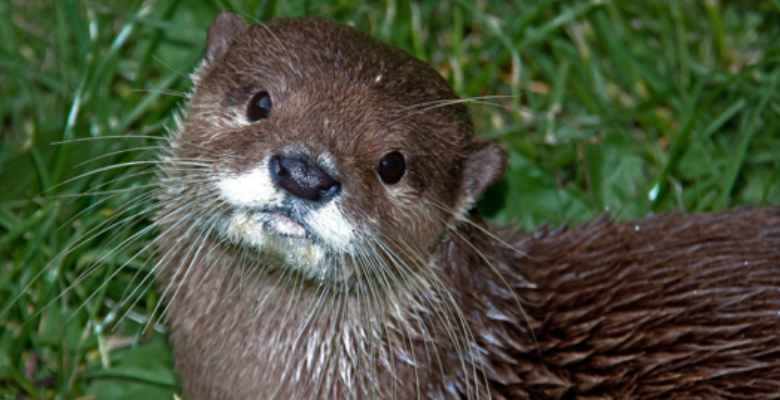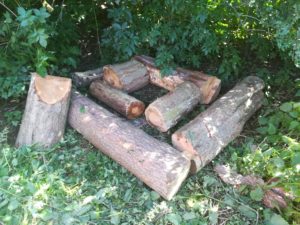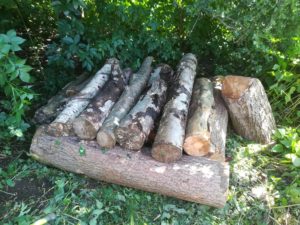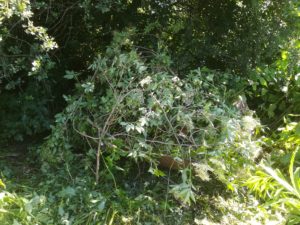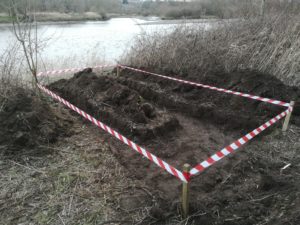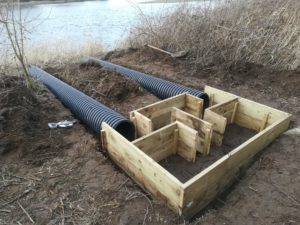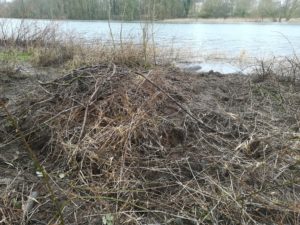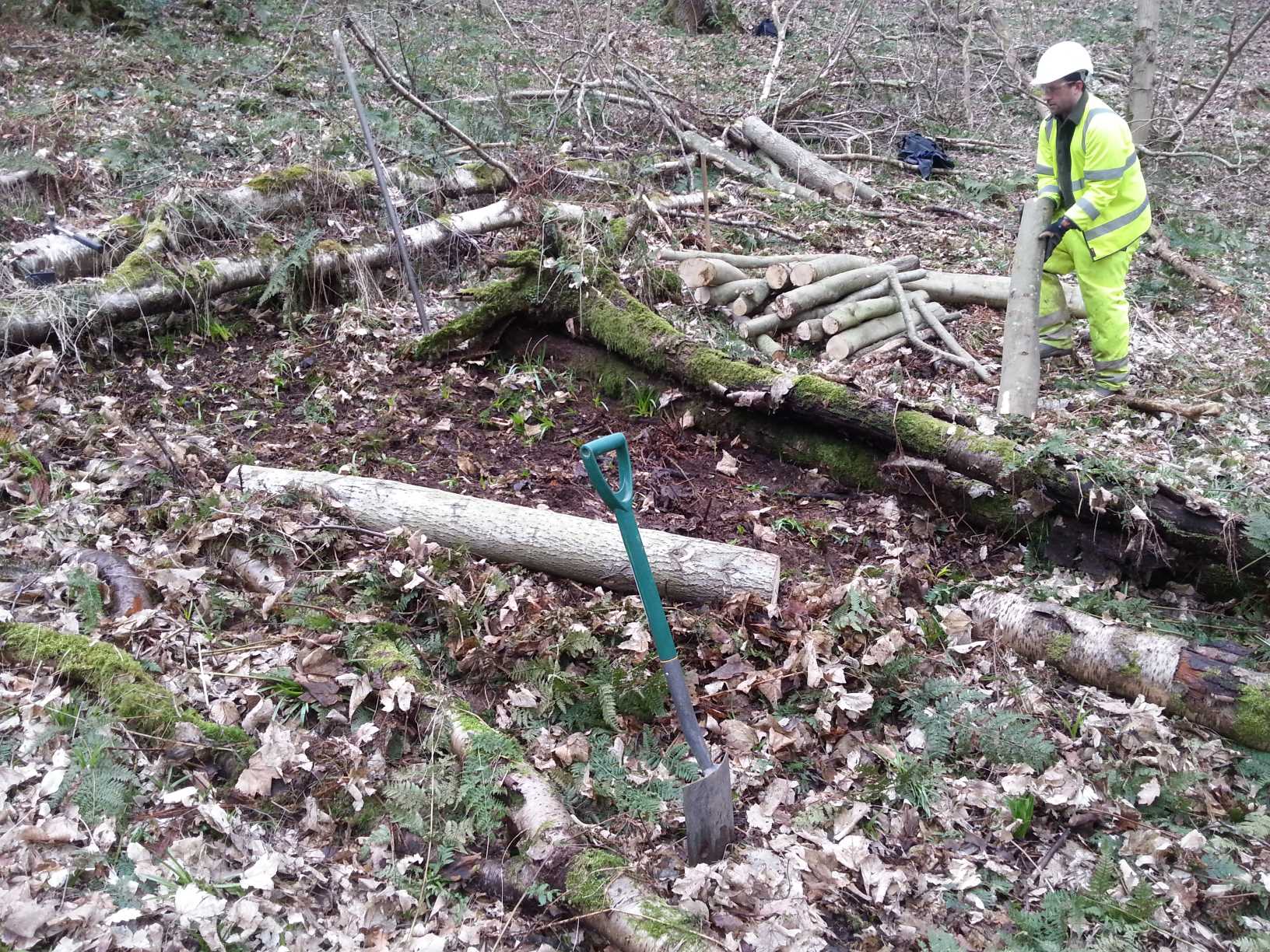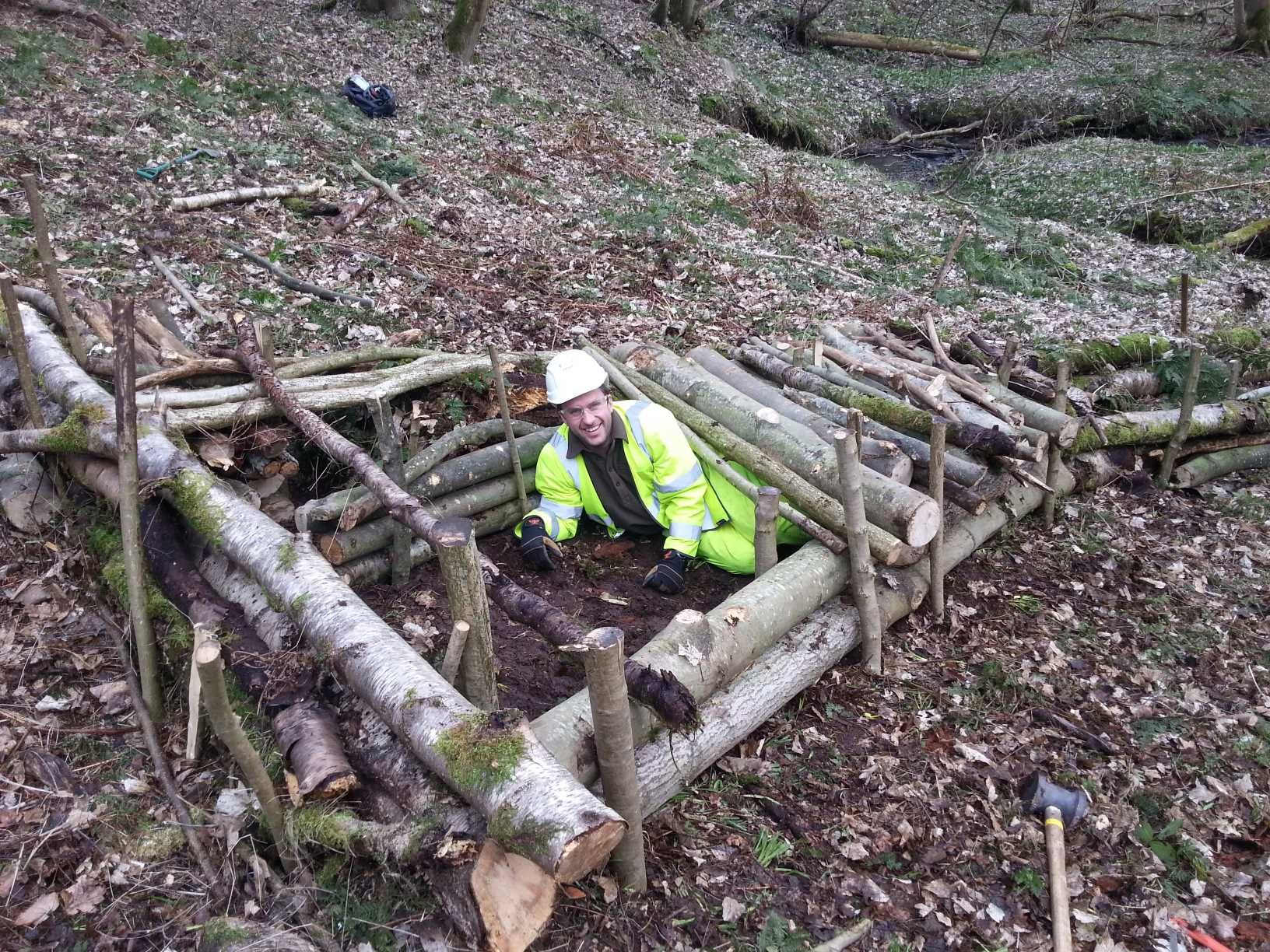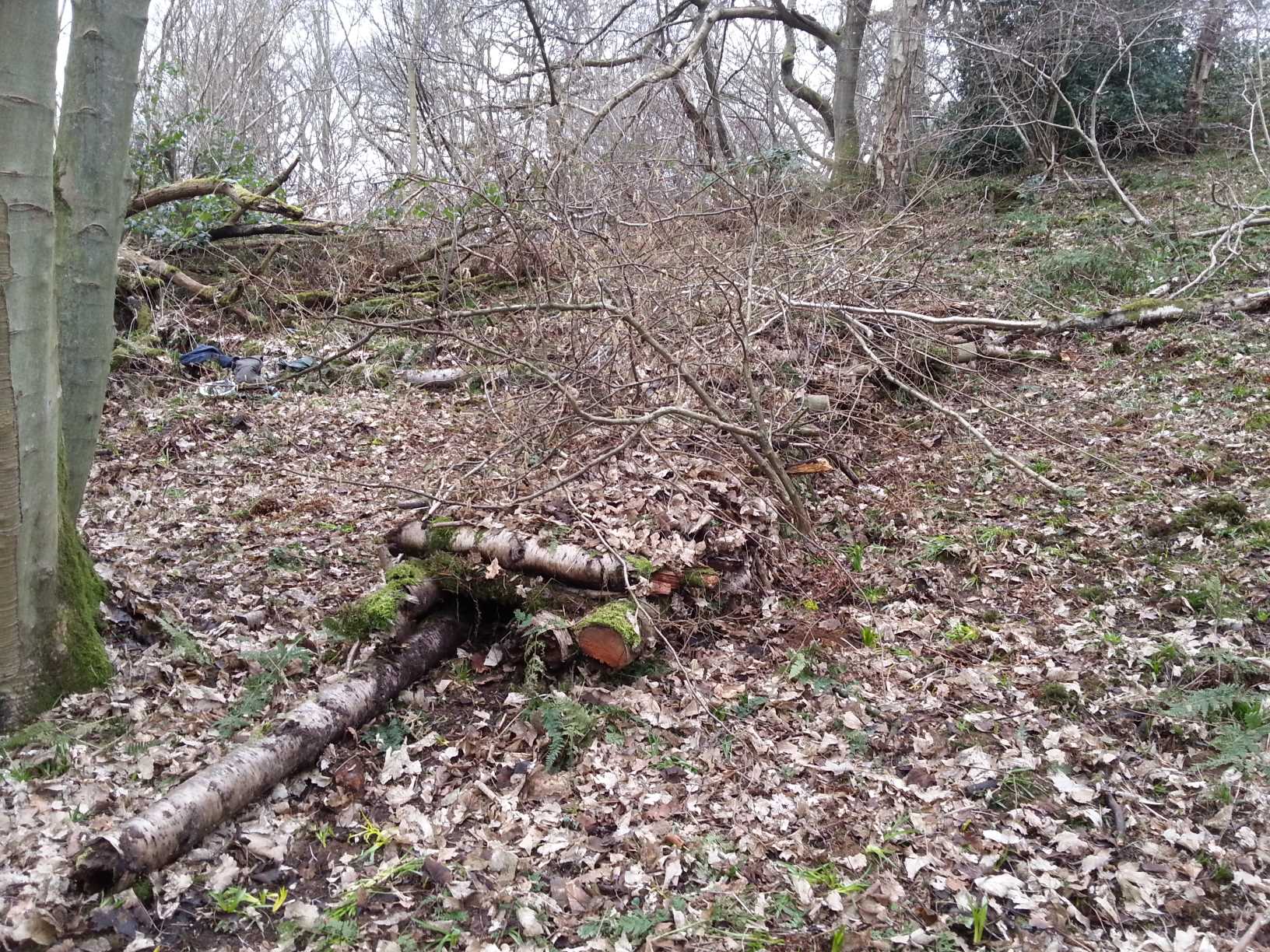The construction of a holt is a simple way of supporting arguably one of our more charismatic native species, the Otter Lutra lutra. Despite intense historic persecution, habitat destruction and pollution, otters are now reported to inhabit every county in the UK! Building a holt on the fringes of a suitable water body or water course is a simple way of supporting otter population growth.
Otters and Where To Find Them
Otters have long slender bodies with short legs and a thick tapered tail. Their body is approximately 1m long. They have dark brown fur on their back and a pale underside, and their head is flattened with a broad muzzle, small eyes and small ears. Otters swim low in the water with only their eyes and nose visible above the surface. They are the only truly semi-aquatic members of the weasel family. The next time you’re out by water look out for the following key identification signs:
- Spraint – Otters droppings, otherwise known as spraint, are up to 7cm long and are often deposited on rocks and logs along watercourses. They are made up of a mass of fish bones and scales, with a characteristic sweet and musky odour.
- Anal Jelly – A jelly-like excretion that has the same or similar odour to spraint. The colour is highly variable.
- Tracks/Prints – Otter prints are webbed, with five toes, and approximately 50mm across.
Areas where signs of otter can be found include:
- Atop boulders or rocks within, or closely adjacent to, a river.
- Under or near bridges.
- On river banks.
- On the border of ponds and lakes.
- At water course intersections or tributary confluences.
What is an Otter Holt?
Otters rest and raise their young in a den, otherwise known as a holt, which can be within rock cavities, under exposed tree roots or even disused fox dens and badger sets. A holt can extend up to 10m underground and may even have unseen underwater entrances.
An artificial otter holt can be made in a variety of shapes and styles, using a range of materials from pre-fabricated recycled-plastic units, pallets, cut timber, to locally sourced logs and branches. Depending on the site and proximity to a watercourse, they may be totally covered with brash or buried to increase camouflage that helps to minimise disturbance.
Compact Mixed-Timber Framed Holt
Compact Sawn-Timber Framed Holt
Complex Mixed-Timber Framed Holt
How Can EcoNorth Help You?
If your proposed development is liable to affect otters, you will be required to enact mitigation, compensation, or enhancement measures to minimise any impacts. Any such works must be carried out under a European Protected Species Mitigation Licence (EPMSL) from Natural England or Scottish Natural Heritage.
EcoNorth delivers comprehensive, professional reports based on our findings to inform your project’s planning application or other consenting process. The team is experienced in applying for mitigation licences and ensuring detailed method statements are in place to mitigate against potential impacts upon otters. The introduction of an artificial otter holt along a waterway may form part of such mitigation, which EcoNorth can plan and implement effectively.
If you are interested in the ecological services that EcoNorth can provide or have any questions about habitat enhancement, including otter holt construction, please do not hesitate to get in touch.

